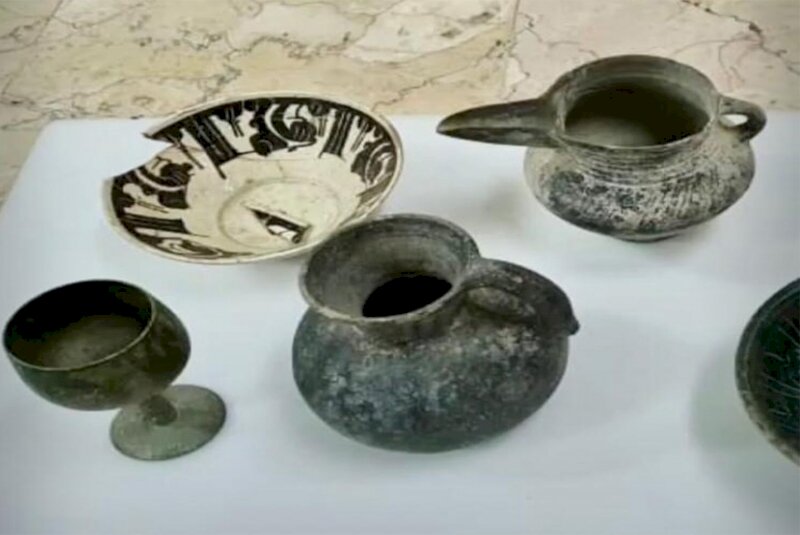Inherited relics donated to Tehran museum

TEHRAN – A total of 25 relics, dating back to different historical eras, have recently been donated to Tehran’s Reza Abbasi Museum, the director of the museum has announced.
The relics, which the donor has inherited from ancestors, include glazed and unglazed earthenware bowls, glass and stone utensils, and bronze utensils and blades, Sediqeh Qodratabadi said on Wednesday.
The objects are estimated to date back to the pre-Islamic and Islamic eras, the official added.
It is one of the most celebrated deeds for those who cherish cultural heritage to donate historical objects to museums, she noted.
Named after one of the greatest artists of the Safavid era, Reza Abbasi Museum embraces several permanent exhibition halls, each dedicated to an epoch of Iranian arts and history.
The museum’s treasure trove contains artifacts made of baked clay, metal, and stone from prehistoric times to pottery and metal objects, textile and lacquer paintings, manuscripts, and jewelry belonging to the Islamic period. The displays are set according to the time interval from the 7th millennium BC to the early 20th century.
Currently, some 800 cultural heritage museums are active across Iran and some three million historical objects are being kept at museums affiliated with the Cultural Heritage, Tourism, and handicrafts Ministry.
Iran is home to one of the world’s oldest continuous major civilizations, embracing settlements dating back to 4000 BC. It also hosts some of the world’s oldest cultural monuments including bazaars, museums, mosques, bridges, bathhouses, madrasas, gardens, rich natural, rural landscapes as well as 26 UNESCO World Heritage sites.
The name of Iran, formerly known as Persia, mostly conjures up the first Persian Empire, ruled by the Achaemenids (ca. 550 – 330 BC) and sites such as Pasargadae and Persepolis. However, there are tens of prehistorical sites as the Burnt City in Sistan-Baluchestan, Tepe Sialk in Kashan, Susa, and Tchogha Zanbil in the Khuzestan province, and Ecbatana in Hamedan which predate the Achaemenid period.
From a wider point of view, Iranian history can be divided into Pre-Islamic and Islamic eras. The Medes unified Iran as a nation and empire in 625 BC. The Islamic conquest of Persia (633–656) that put an end to the mighty Sassanid Empire (224–651) was a turning point in the history of the nation.
ABU/AFM
Leave a Comment